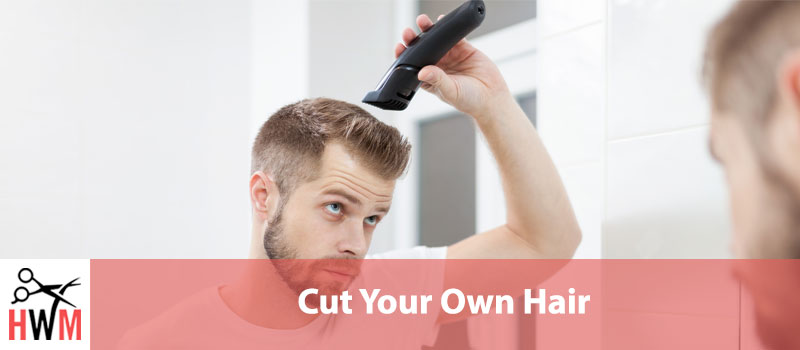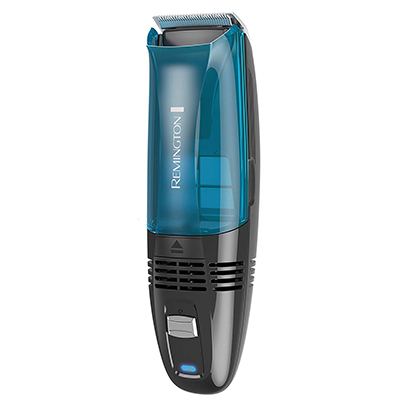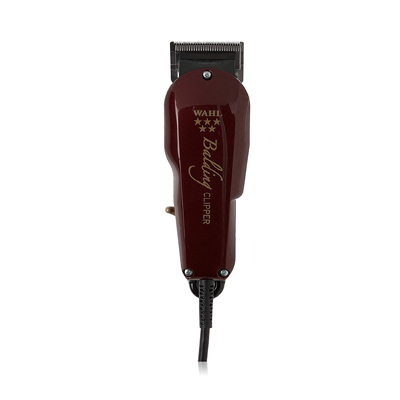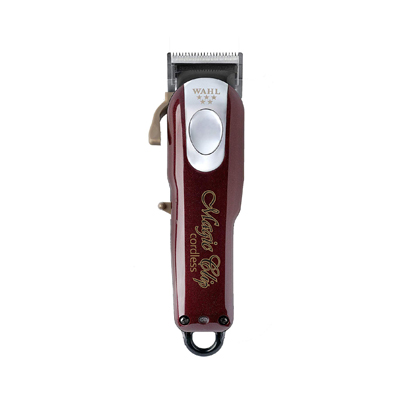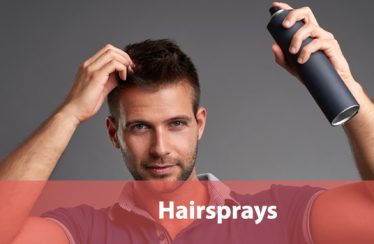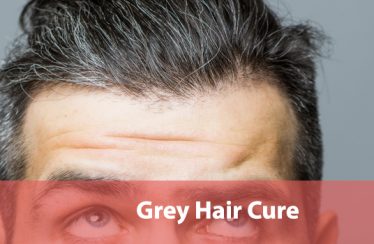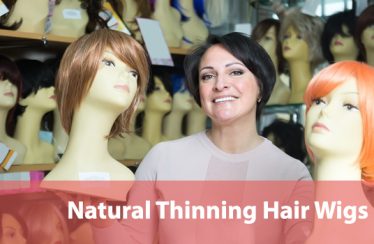While the Covid-19 may be the worst thing to have happened to mankind since the last World War, it has done one good thing. It has taught all of us to be self-sufficient.
With the majority of external services suspended for the foreseeable future and social distancing quickly becoming the norm instead of the exception, it isn’t surprising that people are learning new ways of improving their lives and gaining new skills. Take haircuts for example.
Since salons and barbers have become unavailable, more men are choosing to cut their own hair than ever before. After all, even if they’re staying at home, very few men can pull off the shaggy sideburns and overgrown hair covering the ears look.
As you’re considering cutting your own hair, it is highly likely that one or more of these telltale signs of needing a haircut have appeared on your head. Straight off the bat, we can tell you that cutting your own hair is not that difficult, provided you’re meticulous and know how to go about it.
To make it easier for you, we’ve created this guide which will not only teach you how to cut your own hair but also help you keep track of associated tasks such as getting and maintaining the equipment properly. Here’s everything you’ll find in this guide.
- Why Should You Cut Your Own Hair?
- What You Need to Cut Your Hair
- How Should You Cut Your Own Hair?
- Which Clippers Should You Get?
- Which Are the Best Hair Clippers to Cut Your Own Hair?
- How to Maintain Your Hair Clippers?
Why Should You Cut Your Own Hair?
A visit to a stylist or barber has always involved a lot of contact between the face and their hands. Moreover, as the professional works around your head, their face comes close as well.
This is a ripe setup for the transmission of the novel coronavirus, not to mention any of the other common diseases in the world. Therefore, the foremost reason why you need to cut your own hair is to avoid getting infected.
Even when the worst of this recent pandemic blows over, cutting your own hair will prove to be beneficial in various other ways.
For instance, you’ll save a lot of time by cutting your own hair. Men not only spend a lot of time traveling to their barbers but also waiting for a chair to free up while they’re there. In addition to this, they have to suffer through all the chitchat that the barber or another guest may impose on them.
In contrast, if you decide to cut your own hair, you’ll be able to do it at a time of your choosing and without any undue social obligations. Moreover, once you become more adept, you won’t even have to spend a lot of time cutting your own hair.
It is also worth considering that haircuts can cost a lot. It may not seem much when you look at individual sessions but if you add it all up, it turns out to be quite substantial. Therefore, by cutting your own hair, you’ll be boosting your savings.
Finally, cutting your own hair can be liberating in its own way too. There’s nothing quite like being in control of your destiny even when it comes to smaller things like choosing your hairstyle and managing to create it yourself.
What You Need to Cut Your Hair
While cutting your own hair will save you tons of money in the long term, you will have to spend some money to start. After all, you can’t cut your own hair without proper equipment and setup. In fact, the better your equipment and haircutting setup at home, the better the outcome will be and the less effort it will take.
Apart from buying new things, you may have to rearrange some things in your home too. Moreover, you’ll have to make some key decisions as well. In this section, we’ll discuss all the things you’ll need to be able to cut your own hair ranging from the equipment you’ll need to buy to the decisions you’ll need to make.
The Style

Before you do anything about cutting your own hair, you need to think about how you want it to look in the end. What you decide about your final look will decide how easy or difficult your task will be and whether it will be a success or a failure. However, while deciding, you may want to keep the following information in mind beginning with the shape of your face.
Some hairstyles look better on certain facial shapes than others. Similarly, some hairstyles look horrible on specific facial shapes. It is easy to find charts depicting which hairstyles are suited to which facial shapes but the underlying principles are symmetry and balance. The hair on the head is supposed to balance out the lengths and breadths of the face to create symmetry.
Apart from the shape of your face, you might want to take your lifestyle into account as well. For example, short length hairstyles are better for sporty or active people because they’re easier to manage.
Short length hairstyles are also a favorite of people who don’t like to spend a lot of time fixing their hair. On the other hand, long length hairstyles appeal to people who like to change their look regularly and are fashion-conscious
Convenience is the third criterion you should consider while choosing your hairstyle. The easiest are the two extremes i.e. buzzcut and long hair. Buzzcut requires minimal effort and skill while long hair is easy because all you need to do is even out the hair. You even have more room to err while cutting longer hair.
All other hairstyles in the middle of this spectrum will have varying degrees of difficulties. Remember, the more nuanced a hairstyle is, the more difficult it will be to achieve, especially if you’re cutting your own hair.
The Location
It is your home. You can choose to cut your own hair anywhere. In practice, however, you wouldn’t want to cut your hair in your living room, bedroom, or kitchen. If you do, the stray hair cuttings in those rooms will become a very big and difficult to solve problem.
This leaves you with the rest of the place, namely the garden or balcony and the bathroom. If you want to turn cutting your own hair into a therapeutic or entertaining experience, then you can choose to go with the balcony, the garden, or the porch.
However, the most sensible place to cut your own hair is the bathroom. The cleaning will be easier and no hair cuttings will stray to unwanted places. Further, after your haircut, you’ll want to take a bath. The fact that you’ll already be in the bathroom will help. Moreover, you’ll have access to running water, something that will make cutting your own hair easier.
The Setup
The biggest challenge of cutting your own hair is the fact that you can’t see what you’re doing without a proper setup. This mainly means creating a dual-mirror system. People who have been cutting their own hair for a while and plan to do it for the foreseeable future tend to have mirrors setup in a way that they can see all sides of their heads.
For instance, most people have another mirror fixed right opposite to their primary mirror in the bathroom. This allows them to see the front and back of their head easily. Other people buy specialized three-way mirrors designed to show the sides too. People whose bathrooms don’t allow the fixing of another mirror, invest in handheld mirrors.
When considering your setup, you should take two other things into account – the lighting and movement space.
If you’ve been going to salons till now, you’ll notice that most of them either have great overall lighting or specialized spotlights on their patrons. Shadows and inaccurate lighting can make it really difficult to cut hair. Therefore, you should make sure that you have proper lighting before you even attempt cutting your own hair.
Similarly, you’ll notice that most salons leave a lot of space between barber chairs. They do this because cutting hair requires expansive movements. If you’re constricted you won’t be able to give yourself a good cut. Therefore, if possible, you should make sure that you have sufficient elbow room in the location you choose to cut your hair.
The Equipment
You can do without everything else in a pinch but there is no way that you can cut your hair without the right equipment. Equipment, in this case, means several different items including barber capes, hair clips, combs, scissors, and hair clippers.
Neither barber capes nor hair clips are mandatory, but they will improve your experience and make the entire process more convenient. The cape will make cleaning hair cuttings easier, while the hair clips will prevent mishaps arising out of hair sections not staying sectioned.
Combs, scissors, and hair clippers are all intrinsic components of cutting your hair yourself. While you can go traditional and ditch the hair clippers entirely, we don’t recommend it because it will not only make the entire process excruciatingly more difficult but also time-consuming. You can’t do without combs and scissors since they’re required even with hair clippers.
How Should You Cut Your Own Hair?
Cutting your own hair isn’t very difficult. After all, how much skill is needed to turn on a hair clipper and put it on your head? The only reason people are scared of cutting their own hair is that it is very easy to go wrong. It is very easy to overcut some parts of your hair. Therefore, the skill comes in knowing what part not to cut.
The worst is that if you make a mistake while cutting your own hair, you’ll have a lot of time to reflect on it. Depending on how severe your mistake is, you may have to wait for several weeks before you can even attempt to fix it. In fact, if it is severe enough, even a veteran hairstylist won’t be able to fix it.
The only way you can prevent mistakes is by planning all your steps and following a roadmap to the best of your ability. Fortunately, the steps aren’t convoluted and very easy to follow. We’ve created a simple step-by-step guide that you can use as your roadmap for cutting your own hair.
Washing vs. Not Washing Your Hair
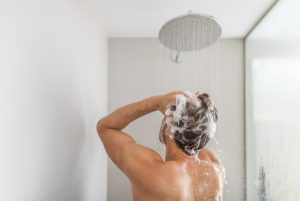
Washing your hair is advisable because it is easier to cut clean hair and the results are much more accurate than when cutting hair with dust, grime, and product buildup. The reason for this is that any kind of buildup will make it much more difficult for clippers and combs to grab your hair.
This is why most people will tell you to wash your hair before you start cutting it. However, it isn’t mandatory. Unless your hair is very greasy and dirty, you don’t have to wash it. The best proof of this is the fact that professional stylists and barbers don’t always wash a customer’s hair before giving him a haircut.
The barbers only advise washing if the hair is in a very poor state or if a lot of gel, wax, or another type of styling product has been used on it. Therefore, from the perspective of getting a good cut, you don’t need to wash your hair. In fact, most men wouldn’t have any problem if they cut their hair without washing it.
At the same time, there’s another consideration worth focusing on – your hair clippers and how they cope with your unwashed hair. It is a well-established fact that hair clippers used on unwashed hair get dirty faster. More importantly, if you use your hair clippers on unwashed hair all the time, then you’ll see the blades becoming blunt very fast.
As a result, since replacement heads of hair clippers can be quite costly, cutting unwashed hair could increase the running costs over time.
Despite all the indicators, if you still choose to not wash your hair, we recommend at least making it damp and detangling all the strands before moving on with the cutting part of the process.
If like most prudent men, you decide to wash your hair before the cutting session, we suggest following your usual routine except for the conditioner. Use your standard shampoo to clean your hair and then towel it dry until your hair is damp but don’t put conditioner.
Once your hair is 80 to 90 percent dry, detangle it with a simple comb. If you have short hair, this shouldn’t be a problem. If your hair becomes too dry by the time you whip out your hair clipper, make it damp again with a simple spray.
Sectioning or Parting the Hair
Once you’ve washed or made your hair damp, you should decide what you’re going to do about hair cuttings. You have a few options. You can either wear a barber cape, take your shirt off, or do the entire thing in the nude.
A barber cape will protect you from hair cuttings but will add to your cleaning tasks. Taking your shirt off is a good option if you’re planning to take a shower after the cut as that is something you’ll want to do anyway. If you’re alone, you can cut your hair in the nude as this will reduce the risk of hair cuttings sticking to your shorts, pajamas, or underwear.
You need to make these decisions before sectioning and parting your hair as wearing a cape or taking a shirt off will ruin your work. Sectioning or parting your hair should be an easy task otherwise. You just need to comb back your hair and then create your normal parting. Comb the hair down on both sides as well as the back of your head. If your hair is very long, you’ll need hair clips to keep these sections in place.
Sectioning and parting your hair are important because this will allow you to break down the entire process of cutting your own hair into smaller, bite-sized sessions. You should ideally work on one section before moving onto the next one.
Starting with The Back and Sides
Before you start shearing hair off your head, realize that it is far easier to cut hair than to grow them back. In other words, if you cut too short, then you’ll be stuck with it for the next few weeks. Therefore, it is always better to be conservative with the length of hair you want to take off.
For this reason, you should start with the bigger attachment guards or guards with higher numbers on them. Once you’ve used the bigger guard,you can always re-evaluate and shorten it further.
However, you shouldn’t choose the attachment guard that will cut the least lengthof hair or the guard with the highest number. The hair on the sides and the back of your head need to be shorter than the top or crown. This means that you’ll be best served by using number five or six guard instead of the number eight guard. By doing this, you’ll be able to give yourself a fade later.
The best place to start your haircut is on the sides. Of course, if you’re going for a buzzcut then it doesn’t really matter where you start. You can just run the clippers all over your head in any order you want. All your hair will end up being of the same length anyway.
For most other simple haircuts, you need to start from one side because the hair at the top will be slightly longer than the hair on the side. Therefore, you take your clippers and work against the grain of hair on one side of the head.
Move the clipper in a rocking motion but don’t go higher than an imaginary line connecting the top of your one ear to the top of your other ear. You can gradually move from one panel to another towards the back of your head. Perform the same against the grain, rocking motion of the hair clipper at the back, and then move onto the opposite side till you’re done.
Between the imaginary line connecting your ears and the portion where your skull curves into the crown, you’ll have longer hair. You can choose to cut this section as small as just above the ears or give yourself a fade. If you want a fade, you need the lowest portion on the sides and back of your head to be short.
For instance, if you cut the lowest sides and back to number five, the portion between the top of the ears and the curvature of the skull can be number six or seven. This will create the kind of blend that is required in fades.
The bigger the gap between the biggest and smallest attachment combs, the better your fade will look. If you’re working between the numbers three and five attachment combs then you’ll have to blend them with the number four comb.
However, if the difference is between numbers three and six, then we suggest blending them in the middle with both the numbers four and five. Therefore, the bigger the gap, the more time you’ll have to spend blending between them.
Whichever style you’re going for, choose the appropriate attachment guard and get the section between the top of the ears and the curvature of the skull column by column. Start on one side, move towards the back, get the back, and then progress and finish the other side.
If you find it difficult to work on the hair behind and around the ear, you can use the ear taper that many hair clipper sets include. Ear tapers can also be found in standalone attachment guard sets which can be purchased separately. Using ear tapers will not only make it easier for you to deal with the area around the ears but also ensure cleaner cuts.
Using Scissors at The Top
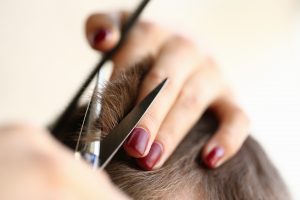
Unless you’re going for the buzzcut, we don’t recommend using a hair clipper for the top portion of your hair i.e. the hair on the crown of your head. The reason for this is that clippers cannot provide the kind of refinement needed to cut the hair at the crown of the head.
Only the most seasoned barbers and stylists use clippers in combination with the barber’s comb. On the other hand, scissors, combined with a barber’s comb, provide the nuance required to even out hair at the top.
Since you’re cutting your hair at home, we advise sticking to a pair of scissors. Also, you need to make sure that you don’t use the standard home scissors. Home scissors aren’t as sharp as barber’s scissors and will create all sorts of problems with two being the most common. The first is that the scissors will pull your hair instead of cutting them and the second is that they’ll miss hairs resulting in an uneven, unattractive hairstyle.
To cut the hair at the crown, you’ll need to move from section to section. You’ll need to use a comb and your fingers to make quarter-inch sections of hair. Once you have one section in your fingers with the hair pulled away from the scalp, you can even out the hair.
You have to move from one section to another and perform the same task on each section. The nuance is to ensure that the lengths of hair in different sections remain the same. To ensure that you don’t make mistakes, we suggest overlapping adjacent sections so that part of the hair from the first section is included in the second section.
This will give you length markers to maintain on every subsequent section. Even so, we strongly recommend starting cautiously i.e. taking off a small length of hair before deciding if you need to cut more. It will be slow but that is the price you pay for getting a good cut.
Once you’re done with most of the hair at the crown of your head, you can cut your bangs. The easiest way to do this is the comb your hair down towards your eyes at the hairline and then evening them out equally in a single arc. However, you can also do this in the same way that you did the hair at the back i.e. lifting sections and snipping them.
Finishing Off the Cut
At this point, you’re done with the majority of the work. All that is left are the finishing touches.
First, you should evaluate your cut and see if any portions need to be evened out or shortened further. If you’re satisfied, you can begin on your sideburns and your hairlines.
Start by trimming the sideburns short. You’ll have to do this in two different ways. The first is to trim the hair in your sideburns so that they don’t look bushy and the second is to reduce the overall length of your sideburns i.e. from your hairline to your jaw.
Long hairs in sideburns never look good so you’ll want to trim them short. In terms of the length of the sideburns, you can go short, medium, or long. Short sideburns stop at the top of the ears, medium extend to the middle of the ear, and long can be as long as you like. Some people even let their sideburns grow to the point that they merge with their beards. It a modern metrosexual look that will go well with the current rage of facial hair.
You should also work on your hairline behind the ears and the back of your head. This means cleaning up the area behind the ears extending to the back of the head with a trimmer.
When it comes to the bottom hairline at the back of your head, you have multiple options. Consider.
- You can clean it up like the side hairlines i.e. an abrupt finish,
- You can leave it natural or tapered wherein the hairline is not abruptly cut off and light fuzz is allowed to exist,
- You can round it so it curves gently from one side to the other, and
- You can give it a square look with the sides dropping down instead of curving.
Most hair clippers come with either a pop-up trimmer or a trimming guard. If yours does not, you can just turn the clipper upside down and use it without a guard. Hair clippers being used like this will be quite wieldy but it can be made to work.
You can also choose to buy a separate trimmer. Many men pick this option because the trimmer comes in handy in facial hair maintenance and beards are very much trending.
Which Clippers Should You Get?
This is a tough question to answer because the answer varies from person to person and your needs may not be the same as someone else’s. Therefore, you’ll have to evaluate hair clippers independently based on your specific requirements vis-à-vis the devices’ features and capabilities.
What we can help you with, however, is deciding which features and capabilities you should focus on. We’ve listed four primary areas that you should delve into while evaluating hair clipper sets most suitable for cutting your own hair.
All of them may not seem important to all of you. Some of you may find one area more important than all others, while many may choose to arrange them in descending order of priority.
Power and Efficiency
The power and efficiency of hair clippers are important to consider if you’re always in a hurry and don’t want to spend a lot of time cutting your own hair. Hair clippers with weaker blades and low power output not only cut hair more slowly but also miss hairs, which results in more passes being required. This is also the reason why weaker and less efficient hair clippers struggle to cut very thick or kinky hair.
More powerful hair clippers tend to have stronger motors. Further, the truly powerful clippers also happen to be professional hair clippers. Wahl clippers usually have the strongest motors in the industry.
The efficiency of hair clippers is also determined by their blades. The sharper the blades, the easier it is to cut thick and kinky hair with the clippers. Additionally, sharper blades don’t miss hairs and require fewer passes over the same spot.
When it comes to efficiency, the durability of the blades matters as well. All blades will gradually lose their edge. However, blades with specialized technologies such as titanium coating or self-sharpening capabilities will stay sharper longer and will require less maintenance.
Hairstyle Suitability and Accessories
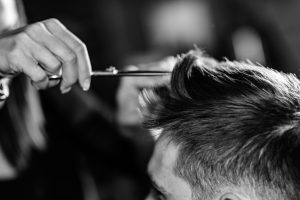
All hair clippers aren’t built alike. Some are better suited to certain types of hairstyles while others are more generic. This is why it is advisable to know what kind of hairstyle you want before pulling the trigger on any particular model.
For instance, premium-quality consumer-grade hair clippers tend to come with the most attachments and accessories but lack sufficient power. On the other hand, professional-grade hair clippers boast offer high levels of power but don’t come with as many attachments or accessories since a professional is expected to have a separate set already.
Which type of hair clippers you buy will depend on what kind of hairstyle you prefer and what kind of usability you’re looking for.
If you’re interested in a buzzcut or a balding cut, you’ll want a device capable of zero gapping. In fact, you’ll be better off buying balding clippers, which are highly specialized clippers designed to give the closest cut possible. Balding clippers are delivered zero-gapped, making it easier for casual users to use them.
On the other end, if you plan on working on lengthier hairstyles, then you’ll want hair clippers with bigger attachment guards. Similarly, if you want to chop and change your hairstyle often, you should look for hair clipper sets with as many attachment guards as possible.
Ease of Use
It would also be a good idea to go for sets with the most accessories as this will make your life easier in various ways.
For example, styling scissors included in the kit can be particularly helpful, since you can’t use home scissors to cut your own hair. If they come with a barber’s cape, a barber’s comb, and hair clips, then you’ll not need to buy anything separately.
Similarly, you’ll need to clean most hair clippers after every cut. This is a task that is made easier with the presence of a cleaning brush. Further, if the kit comes with a cleaning and charging station, then you won’t have to do anything. You can just drop the clippers into the station and it will get cleaned and charged at the same time.
You’llalso have to oil the blades on the clippers regularly to increase their life. Oiling the blades reduces friction and ensures that the blades remain sharp longer. For this reason, some manufacturers include lubricating oil in their kits. If your kit contains the oil, oiling the blades will be a simpler task for you.
Other convenience-centric features need to be considered as well such as the weight and compactness of the device. However, the most important convenience-focused feature is vacuum suction capability.
Vacuum hair clippers can suck in hair cuttings as soon as they’re produced. These hair cuttings collect in either a vacuum cleaner or a built-in collection chamber, taking away the need to clean after a haircut.
Financial Load
While evaluating shortlisted clippers, you should also analyze their impact on your finances.
You’ll come across the initial cost first. Most of you will make your decision based on the list price. However, you should also consider running costs i.e. the cost of replacing the heads on the clippers.
When the blades become blunt, the only way to fix the clippers is to replace them. The replacement heads of most clippers, unfortunately, are priced similarly to the actual device. However, availability does vary greatly.
Which Are the Best Hair Clippers to Cut Your Own Hair?
There’s no official certification for the best hair clippers to cut your own hair, but our research has thrown up three standout models – the Remington HC6550 Vacuum Haircut Kit, the Wahl Balding Clipper #8110, and the Wahl Magic Clip #8148. All three of these hair clippers have been reviewed below for your convenience.
1. Best Vacuum Hair Clipper: Remington HC6550 Cordless Vacuum Haircut Kit
When it comes to vacuum hair clippers, the Remington HC6550 is the most balanced device in the market right now. It not only offers excellent cutting and suction capabilities but also a huge hair cuttings collection chamber.
The cutting ability ensures that the hair is not pulled and is cut properly instead. The suction ability ensures that hair cuttings don’t create a mess, and the size of the collection chamber reduces the number of times you have to empty it.
Its cutting ability is a result of its powerful motor and stainless-steel, titanium-coated precision blades. Incidentally, even though the motor in this device is very powerful, it doesn’t make a lot of noise.
The device is incredibly convenient to use too, especially since it comes with 11 attachment combs and multiple other accessories such as storage pouch, ear tapers, barber scissors, and styling combs.
Further, this affordably-priced device can be used cordlessly or with a cord. When being used cordlessly, it can run for 60 minutes non-stop after being charged for four hours. In terms of ergonomics, the device scores well because of its design and lightweight, even if it is a little bulky because of the large collection chamber.
2. Best Hair Clippers for Buzzcuts: Wahl Professional 5-Star Balding Clipper #8110
If you like to keep things simple, then you’ll choose shorter hairstyles like a buzzcut. This means getting as close to the scalp as possible. This is best achieved with specialized balding clippers and the best example of such a clipper is the Wahl #8110.
This device sports Wahl’s #2105 German-milled blades which are made up of titanium and boast of self-sharpening technology. Further, the hair clippers are shipped zero-gapped, allowing them to cut hair incredibly short. The entire kit comes with two attachment combs, a red blade guard, a cleaning brush, and lubricating oil.
Competitively priced, this device is super compact and incredibly light, even though it is based around the V5000 electromagnetic motor. Further, this device has a professional-grade power cord spanning eight feet in length.
3. Best Hair Clippers for Fades: Wahl Professional 5-Star Cord/Cordless Magic Clip #8148
Fades and taper haircuts tend to be a little more complicated than buzzcuts. Some people even feel that these hairstyles are more difficult to cut than longer hairstyles because even the minutest mistakes become visible. What makes things more difficult is that mistakes are also more likely in fade and taper haircuts because they’re more nuanced.
This is why versatile hair clippers are more suited to fades and tapers. One of the most versatile hair clipper kits in the market right now is the Wahl Magic Clip #8148. Its versatility is a result of its eight attachment combs and adjustable taper lever.
Moreover, the blades on this device can be zero-gapped to get an even closer haircut. This means that this device can be used for buzzcuts also. Apart from the attachment combs, this kit also contains lubricating oil, a cleaning brush, and a red blade guard.
Another reason why this kit is so great for fades and tapers is that it doesn’t weigh too much. Its low weight makes it more maneuverable around the head. Its maneuverability is also helped by the fact that it can be used cordlessly. On battery, it can run for 90 minutes non-stop, requiring only 20 minutes to reach full charge.
Further, this device is available in three different colors, which are burgundy, red, and a combination of black and gold. It doesn’t even cost too much, especially if you consider its qualities and features. In fact, it offers great value on its list price.
How to Maintain Your Hair Clippers?
Taking care of your hair clippers is as important as learning how to cut your own hair. In fact, you’ll have to take considerable steps to keep it in good shape, regardless of whether you get one of our recommended hair clippers sets or another model entirely.
It is also important to note that most of your maintenance efforts will be aimed at the blades of the device. Here’s what you’ll need to do.
Cleaning the Blades
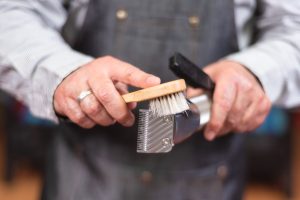
Any dust, hair, or debris on your hair clippers’ blades will end up either damaging the blades or making them blunt. This is why it is important to clean the blades.
To clean the blades, you need to use a cleaning brush. You can begin by using the cleaning brush provided in the kit, but you may have to buy a hair clippers cleaning brush separately since the provided cleaning brushes usually tend to be flimsy. Cleaning brushes with strong bristles will be better able to remove debris from the blades.
Some hair clippers are waterproof, while others are wet and dry devices.Waterproof devices can be used in the shower while wet and dry devices can be used for wet shaving. The blades on both these types of hair clippers can be cleaned under running water. The combination of running water and brushing is sufficient for most scenarios.
For particularly difficult situations, you can try wire brushes too. However, for this scenario, we recommend removing the blades from the clippers first.
This should be an easy enough task in most cases since blades are attached to clippers by two screws. Once the blades are detached, you can go about scraping and rubbing them to your heart’s content. You can even dip them in water if you wish but make sure that you dry them thoroughly later to prevent rusting.
Additionally, we recommend cleaning your styling scissors and combs thoroughly too. Scissors and combs can both leave debris and hair cuttings in the hair if you didn’t clean them after using them previously. Cleaning them is easy as well. Brush, rinse, wipe, and dry the scissors and clean the comb with soap water.
Oiling the Blades
Expert hairstylists and barbers strongly recommend oiling the blades at regular intervals. Some manufacturers even include instructions for this in their hair clippers kits.
It is important because it keeps the blades sharp and useable for a longer period. Oiling the blades isn’t difficult either, especially since many kits come with bottles of lubricating oil.
If the blades are attached to the device still, put two to four drops on the blades and turn the device on. If they’re detached, then oil them more thoroughly before re-attaching them to the device. In both scenarios, you have to make sure the blades are clean before and after you oil them.
Aligning the Blades
Consumer-grade hair clippers usually don’t have the problem of misaligned blades. Misaligned blades only occur with professional-grade hair clippers and if the user removes the blades for cleaning. The blades on professional-grade hair clippers need to be aligned straight out of the box. The alignment of blades also defines whether the blades are zero gapped or not.
To align the blades, you need to loosen the screw so they can be jiggled on the spot. If you’ve already removed the blades then you need to screw them back in till they’re loosely attached. If the edges of the blades are aligned flush against each other then they’re said to be zero-gapped. If the edge of the top blade overlaps the edge of the lower blade, then they are not.
Zero-gapped blades provide the closest cuts but require a lot of skill or they will end up cutting and nicking the user. Non-zero-gapped blades don’t offer as close a cut but are very easy to use because they don’t nick and cut the user.
Charging the Clippers
If you’re buying or have bought cordless hair clippers, then you’ll need to pay close attention to how you charge them as well. Most people like to leave their clippers connected to the power source when they’re not using it. If your cordless clipper is always charging then you can be sure that its battery won’t last a very long time.
Overcharging is a very common mistake people make with their hair clippers.Instead of making this mistake, we recommend you find out how long your hair clipper needs to be charged to reach full battery capacity.
Higher-end hair clippers will have features to prevent overcharging. The features usually take the form of indicators to show battery capacity or automatic cutoff from the power source when the battery is full. Unfortunately, these features are incredibly rare and only available on extremely expensive hair clipper kits.
Therefore, it is better for you to either refer to the manual and stick to the provided duration or contact the manufacturer to find outhow long you need to leave them plugged-in to achieve full capacity.
